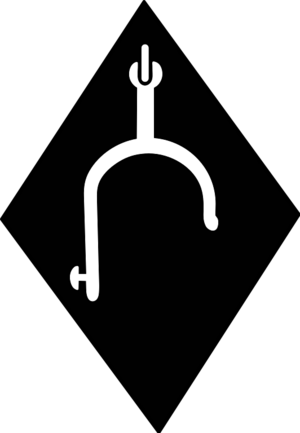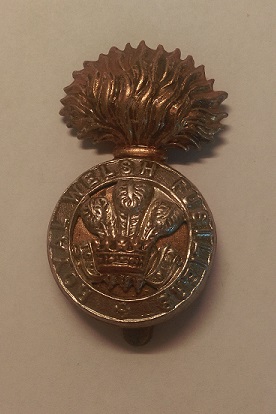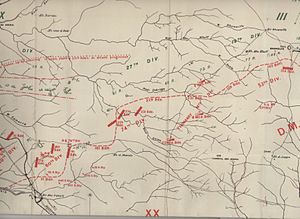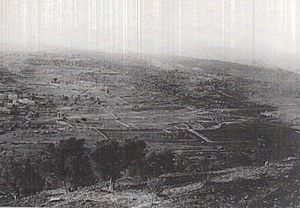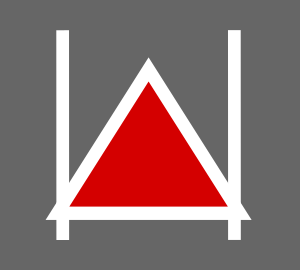1/1st Denbighshire Hussars facts for kids
Quick facts for kids 1/1st Denbighshire Hussars24th (Denbighshire Yeomanry) Bn, Royal Welch Fusiliers |
|
|---|---|
| Active | 10 August 1914–1919 |
| Country | |
| Branch | |
| Type | Yeomanry |
| Role | Cavalry/Infantry |
| Size | Regiment/Battalion |
| Part of | Welsh Border Mounted Brigade 74th (Yeomanry) Division 31st Division |
| Garrison/HQ | 1 Erdigg Street, Wrexham |
| Engagements | Second Battle of Gaza Third Battle of Gaza Capture of Beersheba Capture of the Sheria feature Capture of Jerusalem Defence of Jerusalem Capture of Jericho Battle of Tell 'Asur Hundred Days Offensive Action of Le Becque Capture of Vieux-Berquin Fifth Battle of Ypres Action at Tieghem |
The 1/1st Denbighshire Hussars was a special military group from Wales. They were formed during World War I to help the war effort. First, they served as cavalry, riding horses. Later, they became infantry soldiers, fighting on foot.
This unit was sent to Egypt to guard the area. After that, they became the 24th (Denbighshire Yeomanry) Battalion of the Royal Welch Fusiliers. They fought bravely in the Middle East, capturing important places like Beersheba and Jerusalem.
Later, they moved to the Western Front in Europe. There, they helped in the final push in Belgium until the war ended. The unit was officially closed down after the war in 1919.
Contents
Joining the War: Mobilisation
When World War I started on August 4, 1914, the Denbighshire Hussars got ready for action. This group was a Yeomanry regiment, which meant they were part-time soldiers. They met at their drill hall in Wrexham, Wales.
Their leader was Lieutenant-Colonel H.P. Sykes. The unit joined the Welsh Border Mounted Brigade and moved to eastern England.
Volunteering for Overseas Service
The part-time soldiers were usually meant to defend their home country. They didn't have to fight overseas. But on August 10, 1914, they were asked to volunteer for service abroad. Most of them said yes!
Because so many volunteered, new rules were made. Units were split into "1st Line" for overseas service and "2nd Line" for home defence. Later, a "3rd Line" was created. These new groups trained replacements for the soldiers fighting abroad.
The 1/1st Denbighshire Hussars in Action
The 1/1st Denbighshire Hussars were first stationed in Suffolk, England. They trained as part of the 1st Mounted Division. While training, they also helped defend the East Coast from possible attacks.
By late 1915, the soldiers stopped using horses. They were getting ready to be sent to the Middle East.
Serving in Egypt
On March 5, 1916, the 1/1st Denbighshire Hussars sailed to Egypt. They arrived on March 15. In Egypt, they joined another group to form the 4th Dismounted Brigade.
At first, they helped guard the Suez Canal. Later, they moved to Egypt's western border. They patrolled the area, but they didn't see any fighting there.
In early 1917, the army in Egypt needed more foot soldiers. So, the cavalry units were officially changed to infantry. The 4th Dismounted Brigade became the 231st Brigade. This new brigade joined the 74th (Yeomanry) Division in March 1917. This division was known as the 'Broken Spur Division'.
Becoming the 24th Royal Welch Fusiliers
In February 1917, the cavalry regiments in the new division became infantry battalions. On March 1, 1917, the 1/1st Denbighshire Hussars changed its name. It became the 24th (Denbighshire Yeomanry) Battalion of the Royal Welch Fusiliers (RWF).
Fighting in Palestine
The 24th RWF arrived at Khan Yunis on April 4. The army had already tried to attack Gaza once, but failed. The 74th (Yeomanry) Division took over the front lines on April 7.
The division was kept in reserve for the Second Battle of Gaza on April 19. They were supposed to follow other divisions attacking Gaza. But this attack also failed. The 24th RWF faced some enemy shelling and air attacks but wasn't directly involved in the main fight. They dug into their new positions. For several months, they trained and patrolled the area.
Capturing Beersheba
Sir Edmund Allenby took command of the army in May. He prepared carefully for the next big attack. This was the Third Battle of Gaza, which started on October 27.
The soldiers trained hard in the desert. On October 30, the 74th (Yeomanry) Division marched at night to attack Beersheba. This was a surprise attack on the Turkish side.
The 231st Brigade, including the 24th RWF, moved close to the Turkish defences. After artillery fired, they attacked through dust clouds. The 24th RWF and another battalion, the 25th RWF, led the charge. They faced heavy fire but broke through the enemy lines.
The two RWF battalions had many casualties. But they also captured many enemy soldiers. This helped the army capture Beersheba.
Taking Sheria
Capturing Beersheba was a big win. The army then pushed north. The Turks fell back to a place called Sheria. On November 6, the 74th (Yeomanry) Division attacked Sheria.
The 231st Brigade helped protect the side of the attack. They were then given the job of capturing the station at Tel Sheria. This was completed early the next morning. The capture of Sheria broke the Turkish left side, and they began to retreat quickly.
The Fight for Jerusalem
While the cavalry chased the enemy, the 74th (Yeomanry) Division got winter clothes. They then moved towards Jerusalem. The Turks launched strong counter-attacks on November 27 and 28.
The 74th (Yeomanry) Division arrived to help on November 29. The 231st Brigade took over scattered positions. They helped fill gaps in the defence. On December 8, the army launched its final attack on Jerusalem.
Jerusalem surrendered the next day. The division then spent most of the month building roads. They also helped defend Jerusalem from Turkish counter-attacks. On December 27, the 74th (Yeomanry) Division continued its advance.
The 24th RWF attacked at 10:15 AM. They captured one area, Kh. Dreihemeh. Two other companies attacked Hill 2450. They reached the top but couldn't go further. They faced heavy fire and were forced back slightly. The 24th RWF had many casualties. They were relieved by another unit later that night. By December 31, a strong defence line was set up around Jerusalem.
Capturing Jericho
The 231st Brigade worked on roads until February 16, 1918. Then, they were sent to help with operations towards the River Jordan. On February 19, the army attacked towards Jericho.
The 231st Brigade supported another brigade. They advanced over difficult land, facing machine gun fire. Early the next morning, patrols reached a high point. They could see British troops entering Jericho. The 231st Brigade was then released and the 24th RWF went back to roadbuilding.
The Battle of Tell 'Asur
By March, the army was ready to advance into the Jordan Valley. The 74th (Yeomanry) Division was brought back to the front. The 231st Brigade returned first on February 27.
The Turkish lines were not strongly held. So, on March 1 and 2, the RWF advanced without opposition. They made another small advance on March 6 and 7. The only difficulties came from climbing the steep hills.
On the night of March 8, the army attacked the high ground of Tell 'Asur. The 74th (Yeomanry) Division advanced along the Nablus road. The 231st Brigade rushed the Turkish positions at Selwad at 4:00 AM. The 24th RWF played a small part in this attack.
The brigade swept through the positions. They faced a steep descent and machine gun fire. They continued their advance after dark. By 3:00 AM on March 10, they had taken the position. The Battle of Tell 'Asur was the 74th (Yeomanry) Division's last battle in this campaign.
Moving to the Western Front
The German army launched a big attack on the Western Front. The British army needed more soldiers. So, troops were sent from Egypt to France. The 74th (Yeomanry) Division was told to move to France on April 3.
They left the front line between April 7 and 9. By April 13, they were gathered at Lydda. They then moved back to Egypt, arriving on April 20. On April 29, they sailed from Alexandria to Marseille, France.
The division arrived on May 7 and traveled by train to Noyelles. By May 18, they were gathered around Rue. The 74th (Yeomanry) Division then trained for fighting on the Western Front. They learned about gas defence and bayonet fighting.
Joining the 31st Division
Due to a lack of new soldiers, British divisions on the Western Front were made smaller. The 74th (Yeomanry) Division had to reduce its battalions. The 24th RWF was chosen to leave the 231st Brigade.
On June 21, the 24th RWF and two other battalions joined the 94th Brigade. This brigade was part of the 31st Division. The 94th Brigade was renamed the 94th (Yeomanry) Brigade.
The 31st Division was sent to the north. On June 28, the 31st Division successfully attacked La Becque Farm. This moved the front line forward. The 94th (Yeomanry) Brigade was not involved in this main attack.
The Hundred Days Offensive
The Allies launched a big counter-attack called the Hundred Days Offensive on August 8. The Germans were already moving their troops away. On the night of August 8 and 9, the British army began to advance carefully.
The 31st Division captured the village of Vieux-Berquin on August 13. They pushed towards the Outtersteene Ridge. On August 19, the 94th (Yeomanry) Brigade attacked to complete this operation. The 94th (Yeomanry) Brigade achieved all its goals. This success forced the Germans to retreat again.
The British army then planned another major attack. From September 27, the Allies launched many attacks along the Western Front. On September 28, the 31st Division attacked Ploegsteert Wood.
The 94th (Yeomanry) Brigade arrived late on September 29. On September 30, they set off at 4:00 AM. They crossed about one mile of land, meeting no resistance at first. They reached the River Lys after facing machine gun fire. On October 2, the 31st Division advanced past Armentières without much opposition.
After this battle, the army prepared for its next move. On October 16 and 17, the 31st Division advanced and found no enemy. On October 18, they contacted enemy rearguards after passing through Tourcoing. On October 20, they moved towards the River Schelde. The area was heavily shelled and gassed that night.
The division rested and then moved to another corps. When they returned to the front, the enemy was holding their ground. They were also shelling and gassing the area constantly. The corps would need to make a planned attack to advance further.
This attack was the Action at Tieghem on October 31. The 94th (Yeomanry) Brigade led for the 31st Division. The attack started at 5:25 AM. German resistance was not severe, but machine gun posts fought hard. The first goal was reached on time. The second goal was taken later that morning.
The next day, November 1, the brigade's patrols found no enemy. The Germans had fallen back behind the Schelde. Around 3:00 PM, the brigade met French troops. The corps then went into reserve.
On November 4, the 31st Division switched to another corps. The Germans continued to hold the Schelde line until November 8. Then, they began to withdraw. Fires and explosions were seen behind their lines. The 31st Division established patrols along the riverbank. By November 10, they were across the river.
On November 11, they were pushing forward when the Armistice with Germany came into force at 11:00 AM. This meant the war was over.
On November 13, the division began to move back. By the end of the month, they were stationed around St Omer. Soldiers began to be sent home in December. By March 1919, most of the division's units were reduced to a small group. Soon after, the 24th (Denbigh Yeomanry) Battalion, Royal Welch Fusiliers, was officially closed down.


